Sweet Potatoes, sweeter than their russet cousins, offer a different taste and nutrition to regular white potatoes and come in a range of colors, uses, and sweetness levels to suit your palette.
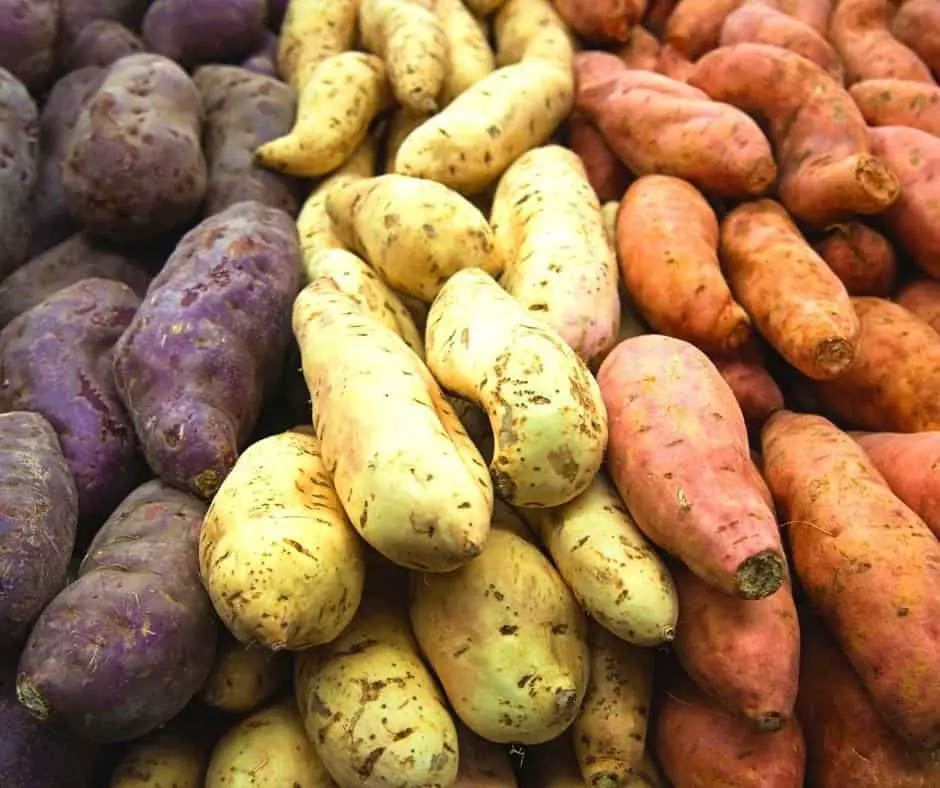
Sweet potatoes have risen in popularity over the past decade for their rich source of fiber, slowly digested carbohydrates, experimental baking, and a heightened interest in ethnic foods. So, let’s explore the many tastes and varieties of sweet potatoes where they come from and some good ways to cook them.
What Does Sweet Potato Taste Like?
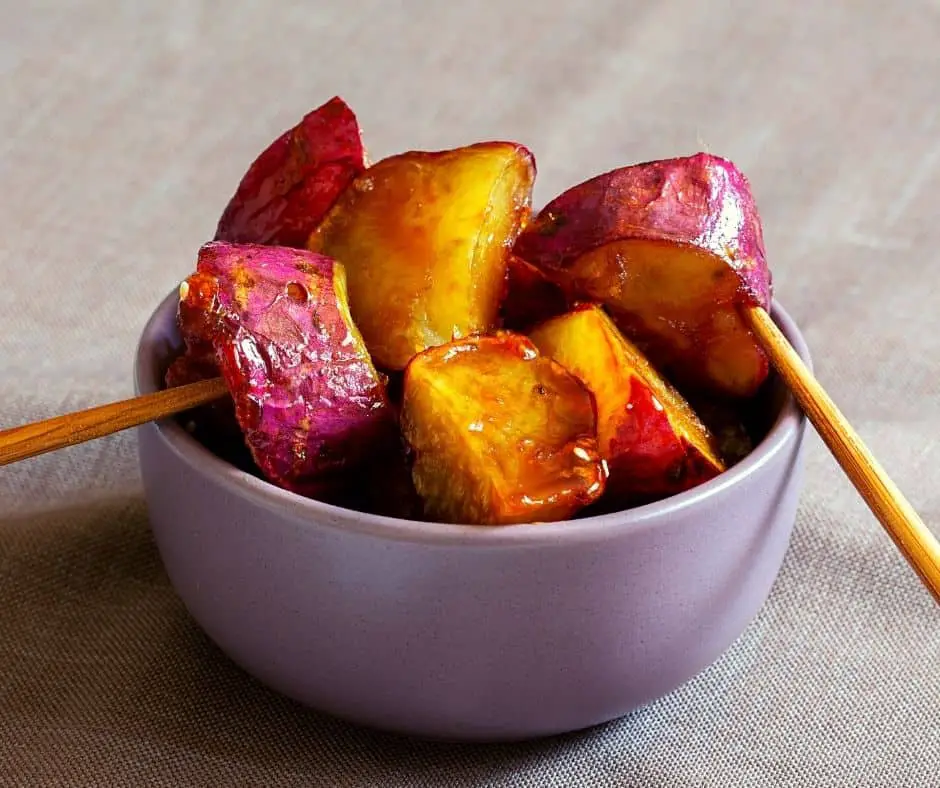
Sweet potatoes come in different varieties and colors, and each of them has its unique taste and flavor. In general, when boiled or baked, the natural sweetness of sweet potato is slightly enhanced, resulting in a creamy and rich caramel-like flavor, somewhat comparable to carrot or pumpkin.
What Makes Sweet Potatoes Great?
Easy to grow, energy-rich tubers, sweet potatoes are ancient ‘superfoods’ whose cultivation goes back thousands of years.
Although they have been a staple in the American diet for many years now, sweet potatoes are becoming very popular for meal prep among health and fitness enthusiasts.
Jam-packed with the good stuff, sweet potatoes are full of vitamins and minerals, have healthy fiber, are low on the glycemic index as well as being a source of beta-carotene, manganese, and copper.
Sweet potatoes also feature heavily in diabetic diets due to their glucose control and pack a flavorful punch that can be made into pretty much anything.
Easy to prepare, they are versatile and easy to incorporate into your recipes, whether it is a dessert or savory dish.
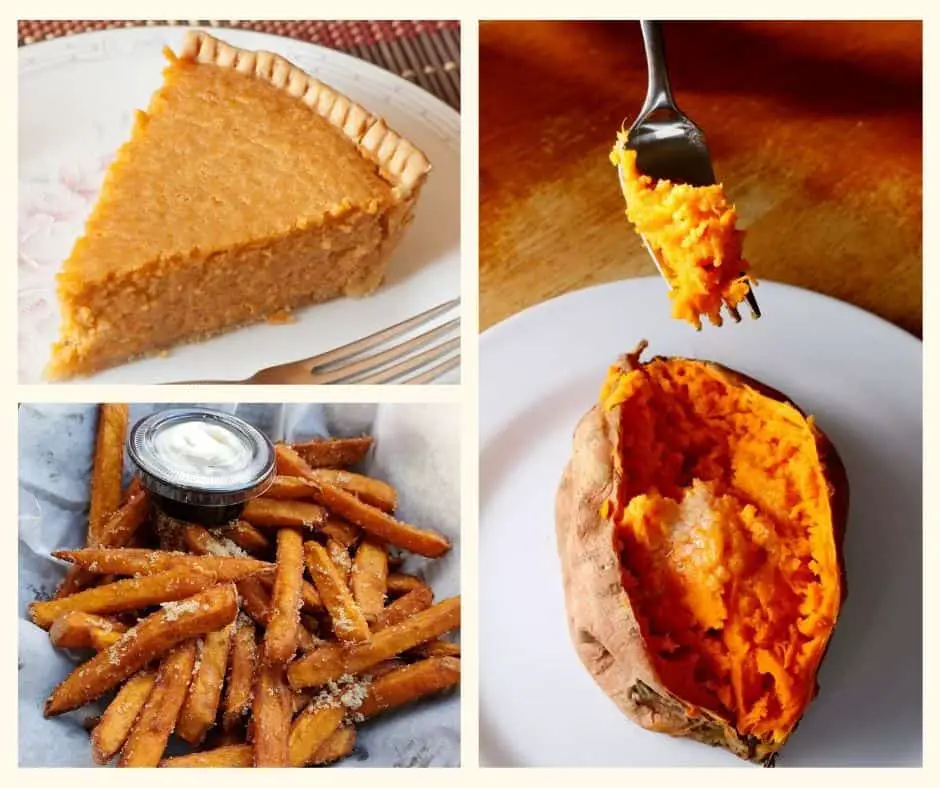
These sweet-tasting spuds are the ultimate hearty comfort food. So versatile in its culinary opportunities. Baked, fried, sauteed, roasted, boiled, pureed, scalloped, or as gnocchi you name it, sweet potatoes can do it.
Sweet potatoes are also popular in baking, and sweet treats such as puddings, pies, cakes, brownies, and pancakes and are a baking favorite of most food blogs.
The sweet potatoes family has a range of different types of potatoes, offering various levels of sweetness, nutrition, and colors that span from white through to purple, red, and orange.
Some of the most popular varieties include Beauregard, Jewel, Garnet, Hannah, Purple, and Japenese, which I will all cover below.
If you follow a diet that encourages you to try and buy a ‘rainbow of fruit and vegetables’, sweet potatoes can be your orange, your white, or your brown. Varieties include Beauregard, Jewel, Garnet, Hannah, Purple, and Japenese which all present in a range of different textures, flavors, and uses.
Vegetables That Can Substitute For Meat

A popular choice for vegetarians and vegans, sweet potato can be used as a meat substitute in curries, stews, and soups. Creating a mild, starchy, sweet flavor when cooked, the interior flesh becomes supple and smooth, with the exterior skin crisping and, in some cases, caramelizing.
Having a sugar content four times that of their regular potato cousin, sweet potatoes have a sweeter, more nutty flavor that can be enhanced through baking, frying, or sautéing.
Jewel, Garnet, and Beauregard sweet potatoes are on the sweeter scale and contain more water than other varieties, which you can see released from their skins as you bake them.
This triple-threat selection of sweet potatoes also cooks well in a microwave without hindering their sweet flavor and smooth, natural flesh texture.
Shades And Tastes Of Sweet Potatoes
In the region of 7,000 different sweet potato varieties grown worldwide, shoppers in the United States can select from more than 100 different types.
Below I will cover the tastiest (I know that taste is very subjective) and most available varieties in the average supermarket. I have left (my favorite) the most sweetest one, the last.
1. Beauregard
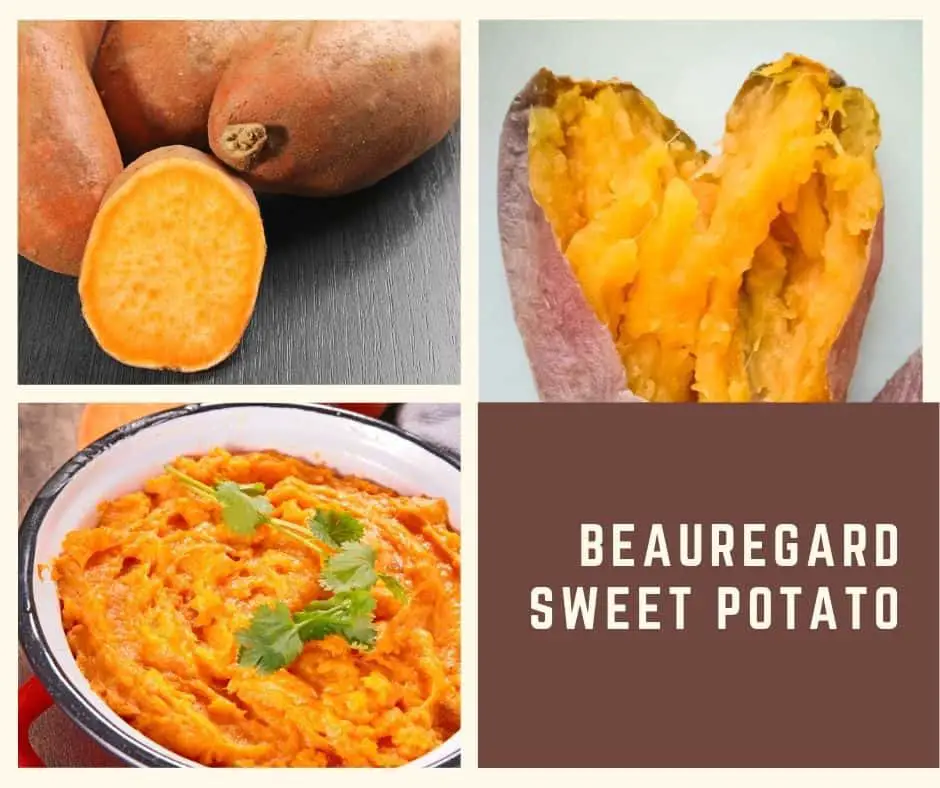
Hailed as the ‘Most popular sweet potato in the world,’ Beauregard sweet potatoes have a pink to orange color skin and flesh and are high in vitamin A, the potatoes aren’t the only edible element of the Beauregard!
You can also eat the roots and leaves of this kind of sweet potato as an alternative to spinach! Initially grown in Louisianna, Beauregard develops a tender, soft, and creamy consistency with a nutty, sweet flavor, making them the perfect choice for mashing and baking.
- Pinky orange skin
- Plenty of sweetness
- It has a long, rounded shape
- High in vitamin A
- You can eat the roots and leaves
- Perfect for mash and baking
2. Northern Star
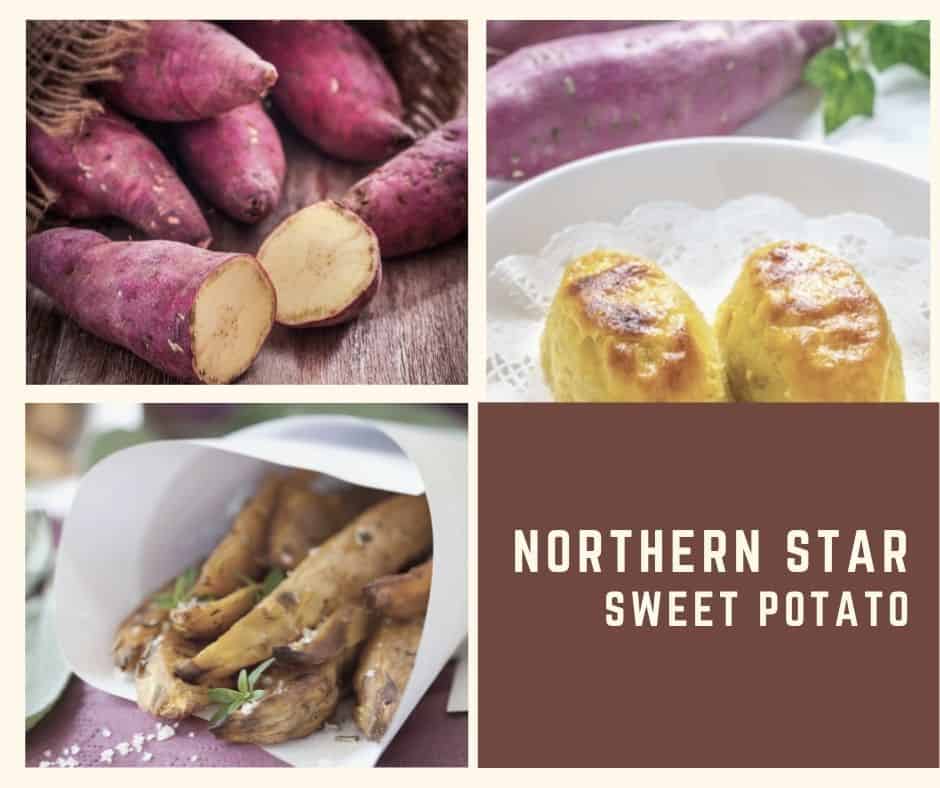
Similar to Beauregard, the Northern Star variety of sweet potatoes also has edible leaves. A contrasting color to Beauregard, The Northern Star variety has red skin, with creamy white inner flesh, providing a nutty flavor. They don’t keep as long, so be mindful of using them within a week of purchase.
It is a bit drier than its orange cousins and not as sweet, making them great for chips and fries.
- Red skin
- Similar shape to regular potatoes
- The white and creamy inner flesh
- Nutty flavor
- Great for chips and French fries
3. Jewel Sweet Potatoes, aka Jewel Yams
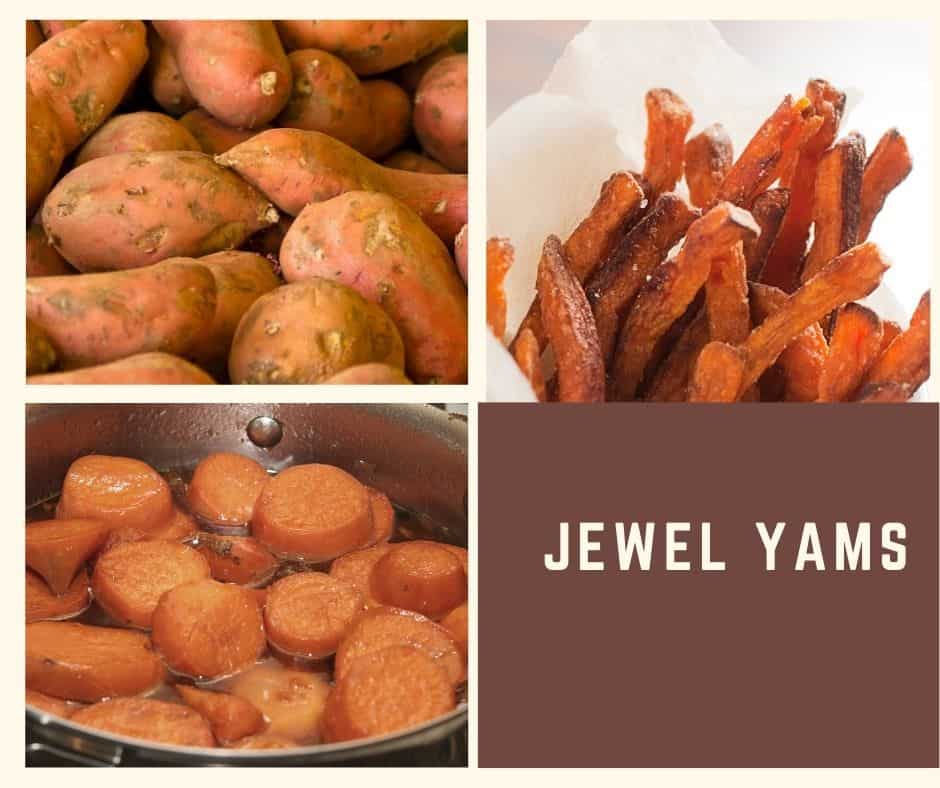
With copper-colored skins that are firm in texture, they come in a skinny, long shape with orange flesh. Jewel sweet potatoes are most likely what you associate sweet potatoes being—used mostly for baking, especially around Thanksgiving and Christmas in pies, casseroles, and of course, roast potatoes.
They have a moist, fluffy texture giving a flavor hint of chestnut, less sweet than the Beauregard variety. Jewel yams cook and retain their bright orange color, more so than Garnet.
- Copper skin
- Firm texture, skinny shape
- Orange flesh
- Great for baking, roasting, and in dishes like casseroles
4. Garnet
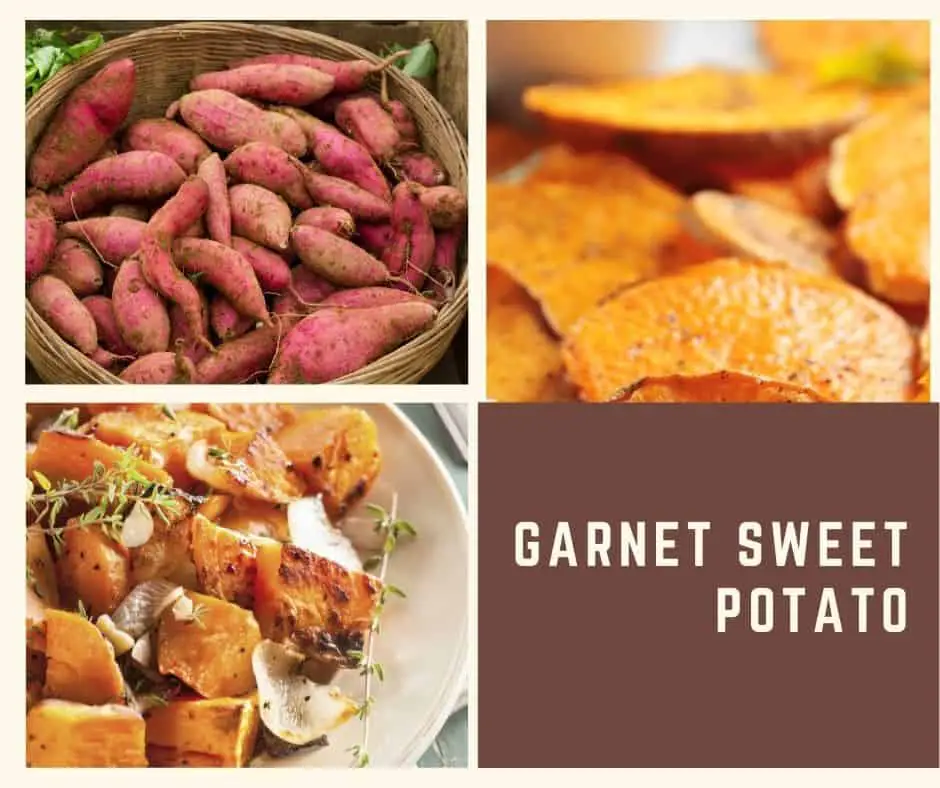
Red or deep orange in appearance and honey orange when baked, giving a delightfully earthy flavor, garnets are perfect for mashed potato, especially as a more watery variety of sweet potato.
Garnets are best used in savory foods and roasting rather than sweet baking due to their high water content, which provides Vitamin C, B6, Iron, Copper, and Potassium.
- The red or deep orange coloring
- Firm, dense, and moist flesh
- Lovely orange hue when baked
- Earthy, sweet, and flavorful
- Long and round shaping
- Great For roasting, baking, frying, mashing, steaming, and pureeing
5. White Sweet Potatoes
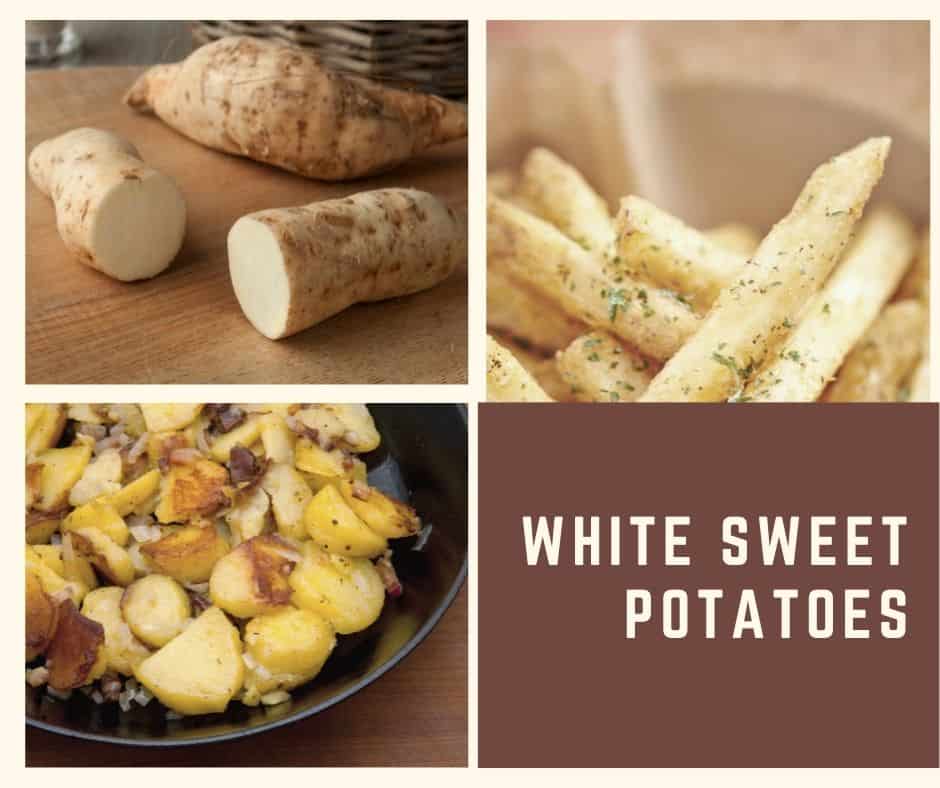
If you’re looking for a less sweet, sweet potato, look no further than the white sweet potato. Despite being a contrasting color, white potatoes remain as nutritious as orange and red sweet potatoes, being the go-between between orange sweet potatoes and regular russet potatoes.
It has a crumblier texture, yet sweeter than the russet cousin; White Sweet Potatoes offer a milder sweetness than its red or orange brothers and sisters.
- Slightly less sweeter than the orange varieties
- An excellent option for filling side dishes or making hash
- Somewhat more crumbly and dry texture than the orange ones
- Also, good when roasted, baked, or grilled
6. Hawaiian Sunshine
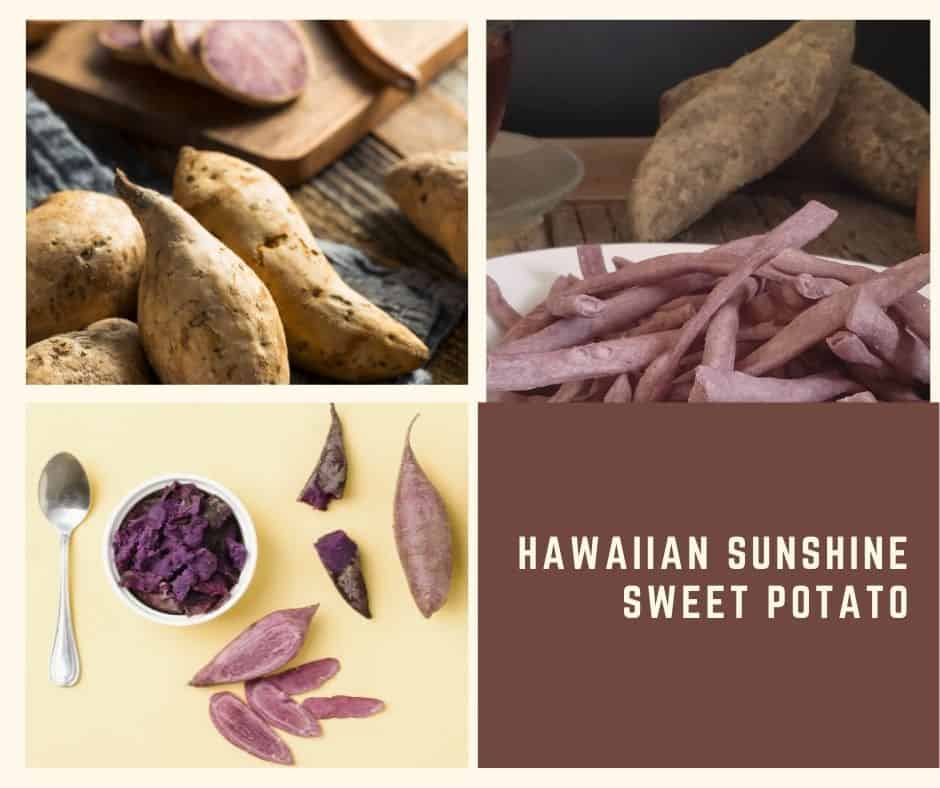
A white-skinned sweet potato with a color punch inner of bright purple. Great all-around potatoes for frying, roasting, baking, and boiling. Hawaiian Sunshine has drier yet delicate flesh than Beauregard. It is a mildly sweet, somewhat soft honey flavor to it.
Hawaiian Sunshines contain 150% more anthocyanins than the ‘superfood’ that is blueberries. Boil whole to get the best results from Hawaiian Sunshine (It also stops the color bleeding.) However, when baked, it takes on a yellow cast.
- White-skinned
- Bright purple flesh
- A super-superfood
- Boil whole
- Great for a boil, baked, fried, roasting, or potato salads
- Alternative to artificial food colorings
7. Hannah
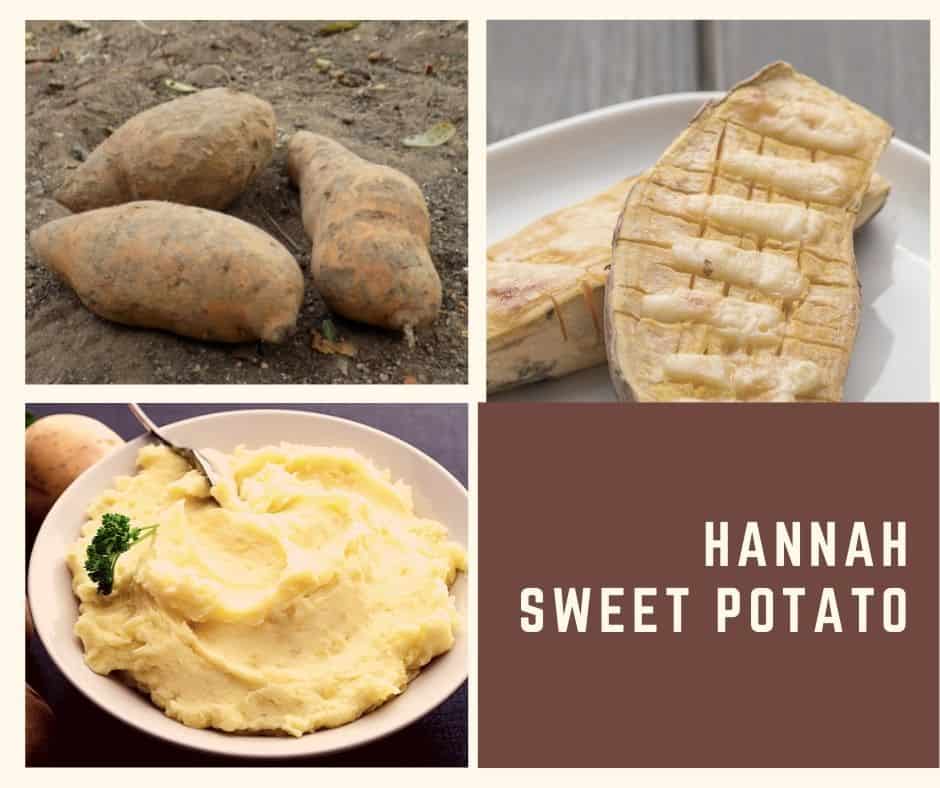
White in external and internal coloring and more round in appearance than the more red and orange varieties. When cooked, it becomes flaky and starchy in texture, very similar in taste to regular potatoes, such as dense and creamy.
It’s firm and dense texture make Hannah ideal for turning into delicious fries, roasting in chunks, or mashing as a side dish.
- White external
- White flesh
- Flaky texture
- Creamy flavor
- Great for roasting, mashing, and fries
Which Sweet Potato Is The Sweetest?
8. Japanese Satsuma-imo
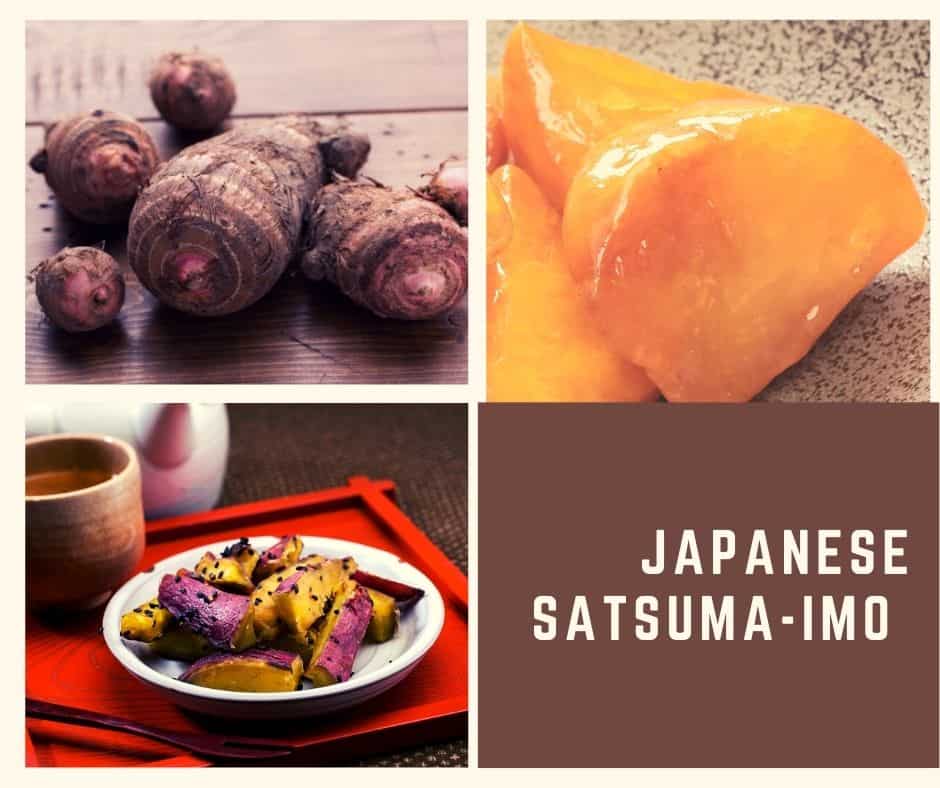
Often found in Asian markets, The Japanese Satsuma sweet potato features a dark-hued purple skin and yellow flesh, which darkens in color when it cools.
Japanese Satsuma-imo is as sweet as a sweet potato can get. When baked, the natural sugar caramelizes, giving a whole new meaning to ‘Sweet’ potato.
To use the Japanese Satsuma-imo for something sweet-based, pair it with cinnamon and nutmeg, or for a more balanced dish, add some salted butter to create a sense of flavor balance.
- Super Sweet with a slight nuttiness and hint of chestnut
- Purple skin
- Pale yellow creamy, smooth, and rich flesh
- Requires longer cooking time
- Deliciously caramelizes
- Great for deep-frying, baking, steaming, roasting, or in soups, curries, and stews
Read Also: How To Store Boiled Potatoes? (2 Best Ways To Do It)
Taste And Decide
I hope that gave you a good overview of what some of the most popular sweet potatoes taste like. But there are also so many other types to discover, explore, taste, and use in your cooking and baking. Just remember, you don’t need to cook super fancy masterpieces, just simple food from fresh ingredients.
Sometimes homemade comfort food is the greatest thing in the world—delicious bowls of mashed sweet potatoes, delicious roasties, and tasty pancakes with a sweet potato twist. Why not try your favorite potato dish with one of the sweet potatoes we’ve explored above?
Whether you’re going to use these sweet-tasting, tuberous roots for a family roast or baking them into brownies, be sure to keep your potatoes unwashed when you take them home from the store or farmers market.
Unwashed potatoes have a longer lifespan than those pre-washed before storing. Store in a cool, dry place until you’re ready to use your sweet potatoes in whatever you fancy, sweet or savory.
The options are endless. You taste and decide!
